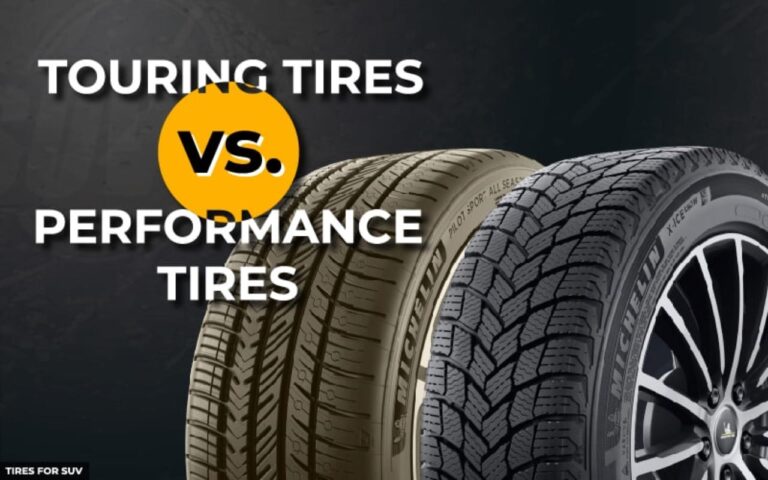Sometimes it becomes confusing on which tire to get because of various tire categories in the market. Touring tires and performance tires are among the most popular types of tires. What are the differences between these tires?
Touring tires generally provide a comfortable ride during long drives. In contrast, performance tires ensure easy maneuverability and high-speed durability. The latter is what performance vehicle and sport car owners usually opt to get.
Aside from performance differences, these two tires also differ in design and construction, particularly the tread patterns and the sidewall profile. They further vary in tread life and prices.
Touring Tires vs. Performance Tires: Main Differences
Tread Design
As you learned so far, touring tires provide a comfortable long-distance ride. With this fact, the tread pattern design of these tires ensures minimal vibration and noise.
Touring tires usually feature a rib tread pattern as this is the tread pattern that generally provides the quietest experience.
On the other hand, performance tires focus on responsiveness and stability. These tires usually feature directional tread patterns that ensure good traction on dry roads and efficiently evacuate water to provide excellent traction on wet roads even at higher speeds.
Sidewall Profile
Touring tires feature a wider sidewall compared to performance tires. This design is what ensures a comfortable experience. The wide sidewall is what minimizes vibrations when you run on bumpy or uneven roads.
The aspect ratio of touring tires is usually 50% or higher.
Performance tires usually have super low sidewalls. They are commonly called low-profile tires with a typical average aspect ratio of 30%. The lower the tire’s aspect ratio, the better the controllability you will get, and the more responsive the tire becomes.
Tread Life
Because touring tires use durable silica compounds, they usually last longer than performance tires. Among the great features of touring tires is their ability to achieve even tread wear. That alone is a good reason why they last longer.
When you buy either a touring tire or a performance tire, I always suggest you check the tread warranty. Most of the tires in the market come with a tread warranty, but I don’t think all do. So, it pays off to check this before you make the actual purchase.
Price
Touring tires are generally less expensive compared to performance tires. Performance tires usually cost at least 30% higher than touring tires. The price difference can even go up depending on the model and the brand of the tire.
Touring Tires Pros & Cons
Performance Tires Pros & Cons
Summary
Touring tires ensure that you are comfortable when you go on longer miles, while performance tires provide you with better handling and cornering ability even when you speed up.
If you just learned about the differences between touring and performance tires, I am sure you feel more confident about what type of tire to get next.
So, which between the touring and performance tires should you get for your SUV? That is a question only you can answer because each one of us has different preferences.
As for my case, I don’t mind so much about the tire’s ability to handle high-speed driving because I usually don’t go fast. What matters most to me is comfort and tread life.
If you enjoyed reading this post, you might also want to find out the difference between a passenger tire and an SUV or light truck tire.

